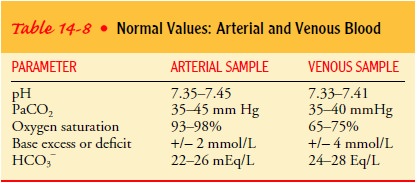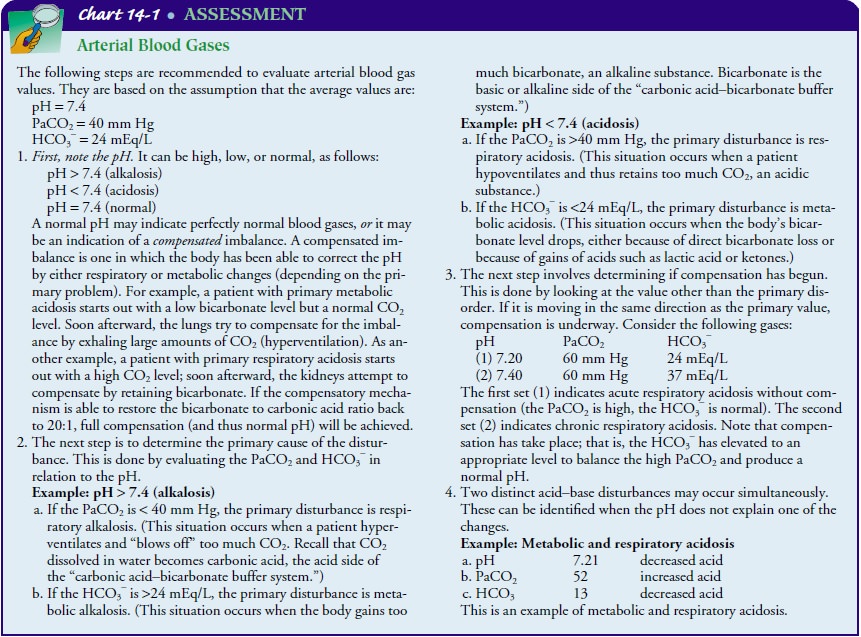Chapter: Medical Surgical Nursing: Fluid and Electrolytes: Balance and Distribution
Blood Gas Analysis
BLOOD
GAS ANALYSIS
Blood gas analysis is often used to identify the specific acid–base disturbance and the degree of compensation that has occurred. The analysis is usually based on an arterial blood sample, but when an arterial sample cannot be obtained, a mixed venous sample may be used. Results of arterial blood gas analysis provide information about alveolar ventilation, oxygenation, and acid–base balance. It is necessary to evaluate the serum electrolytes (sodium, potassium, and chloride) and carbon dioxide along with arterial blood gas data as they are often the first sign of an acid–base disorder. The health history, physical examination, previous blood gas results, and serum electrolytes should always be part of the assessment used to determine the cause of the acid–base disorder (Kraut & Madias, 2001). Treatment of the underlying condition usually corrects most acid–base disorders. Table 14-8 compares normal ranges of venous and arterial blood gas values. See also Chart 14-1.


Related Topics